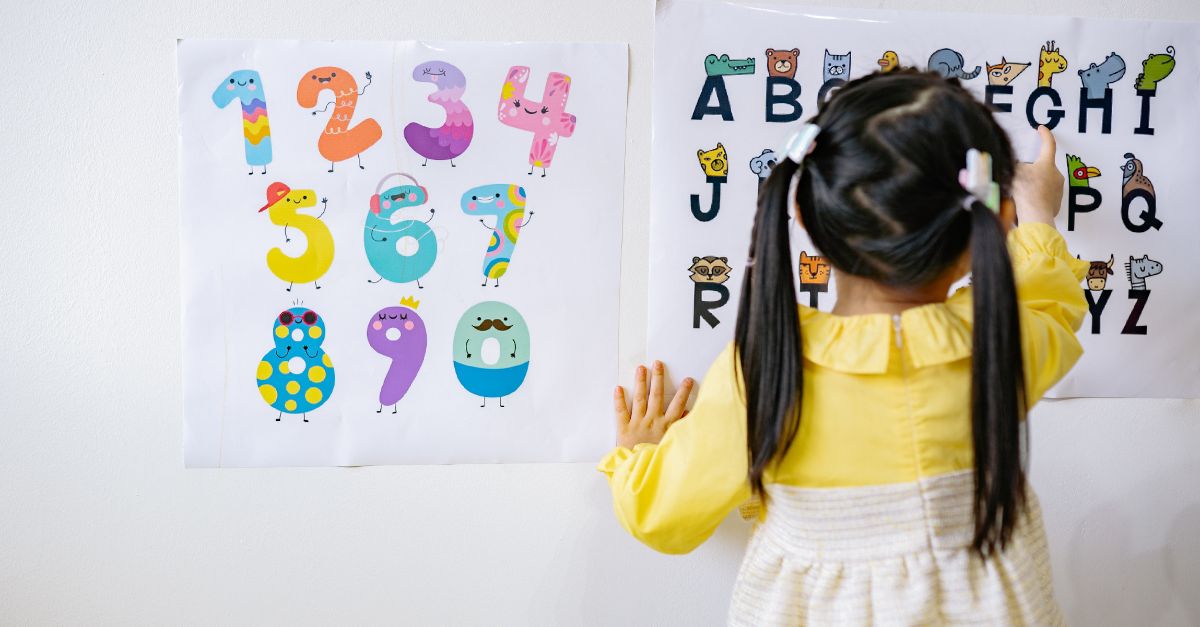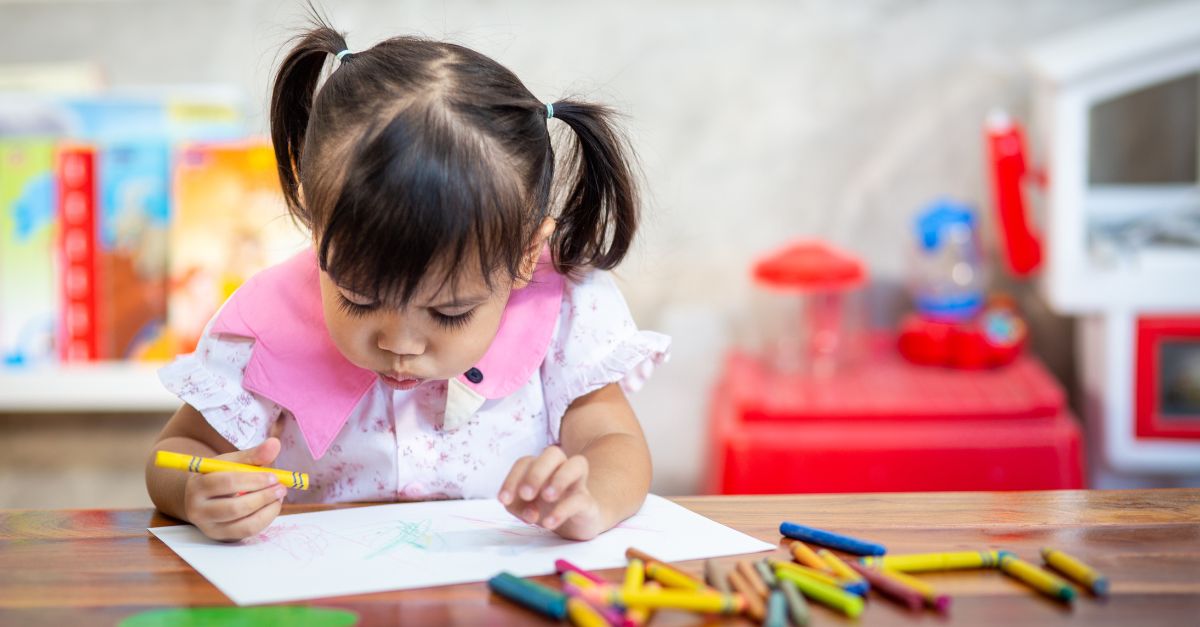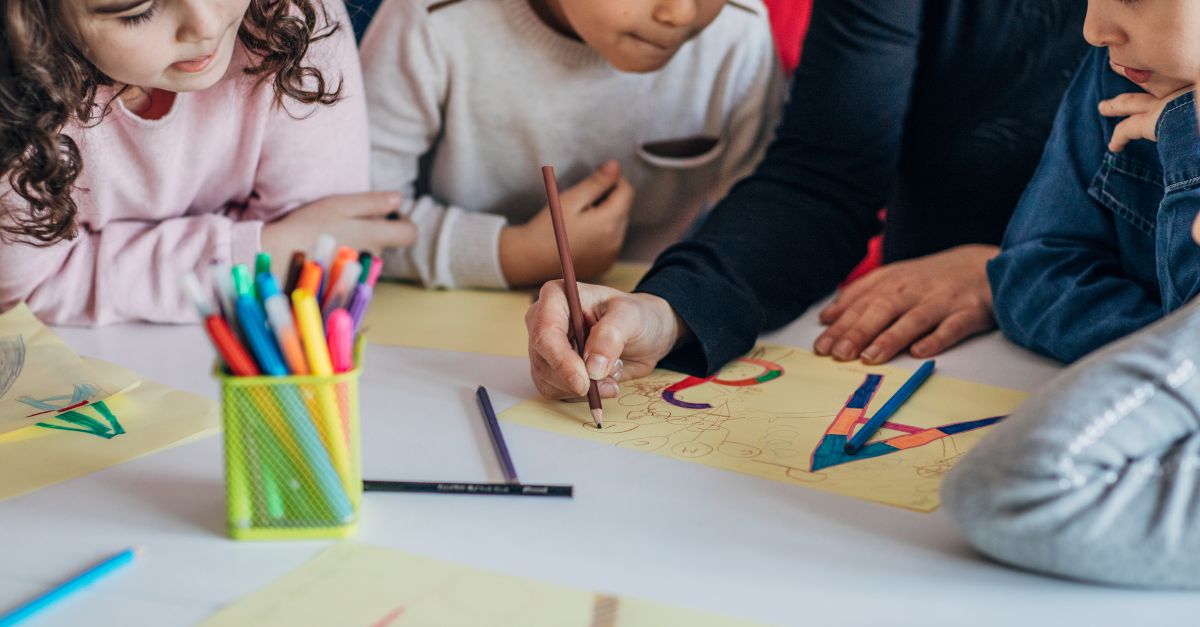Transitions are a natural part of the day in early childhood settings, whether it's moving from playtime to lunch or cleaning up before circle time. Although transitions can often feel like unstructured moments, they offer unique opportunities to enhance children's literacy development. By using fun and engaging games, educators can transform these brief intervals into valuable learning experiences. These moments not only support language and literacy skills, but also help children navigate the more unpredictable parts of their day with a sense of structure and enjoyment.

6 Simple Games to Build Literacy Skills and Ease Transitions
1. "I'm Thinking of a Letter"
This guessing game encourages children to listen closely and make connections between letter sounds and words, supporting phonemic awareness. Phonemic awareness is an essential skill for developing reading and writing abilities, and playing this game during transitions helps children practice sound-letter associations in a fun, low-pressure way.
How to Play: The educator selects a letter and says, "I'm thinking of a letter. It makes the sound [insert letter sound]." Then, offer clues by naming objects that begin with the letter. For example, for the letter "B," say, "It's the first sound in ball, banana, and boat." Children then guess the letter based on the sound and clues.
This game can be played during any brief transition, making it an easy and effective way to reinforce early literacy without needing additional materials. It allows children to stay engaged and think critically about sounds and words, while moving through the motions of the transition.
2. Letter Songs
Familiar songs help children remember and recognize letter sounds while adding an element of fun to transitions. Incorporating letter songs during transitions makes these moments engaging, reinforcing phonics learning through rhythm and repetition, which are effective tools for young children's language acquisition.
What to Sing: Try songs like "Apples and Bananas" to explore vowel sounds. For example, sing, "I like to eat, eat, eat, eeples and baneenees," changing the vowel sounds in each verse.
Singing letter songs engages both auditory and kinesthetic learning, making it easier for children to retain the sounds of letters while they move their bodies. Singing also taps into their sense of rhythm, making literacy development feel like a fun game.
3. Rhyming Games
Rhyming is a vital pre-reading skill that helps children recognize patterns in sounds, a foundation for decoding words. By introducing rhyming games during transitions, educators can build phonological awareness in a fun and playful way. These activities encourage children to manipulate sounds within words, which is crucial for later reading and writing success.
What to Rhyme:
- Play "Willoby Wallaby," using children's names. For example, "Willoby Wallaby Wendy, an elephant sat on Kendy!" Children delight in hearing their names in silly rhymes.
- Use the song "Down by the Bay" and encourage children to create their own rhymes ("Did you ever see a cat, wearing a hat?").
- Play a "Rhyming Words" game, where you sing, "I'm thinking of a word, it rhymes with ‘cat.'" Encourage children to guess the rhyming word.
These rhyming activities not only support early literacy but also build social-emotional connections, as children delight in hearing their names in the rhymes and feel included in the learning process.

4. Building Words Together
Collaborative word-building activities are perfect for transitions as they encourage children to actively engage with letters and sounds. Working together to form words introduces them to blending sounds, a key skill in reading development. This hands-on approach allows children to take ownership of their learning while improving their phonics skills.
How to Play: This activity can be used in small groups when children are transitioning to the next part of the day at different times. For example, when a group of children is getting ready for outdoor play, this game can be played with those waiting for their turn. Give three children magnetic letters or letter cards (e.g., "C," "A," and "T"). Have them arrange the letters in the correct order to form the word "CAT."
Alternatively, you can play this game after the transition in a large group. For example, encouraging children to clean up their play area and once they are done they can come sit on the carpet and they will be given a letter to play the word building game together.
5. Interactive Name Activities
Names are highly meaningful to children and can be a powerful tool for building literacy. Using names in transitional activities helps children make personal connections to letters and words, creating more relevance and interest in the learning process. These activities also support early writing skills as children see the direct connection between letters and their personal identities.
How to Play:
- Use prompts like, "If your name starts with the letter ‘S,' line up for lunch."
- Try "Name Prompts" such as, "If your name has five letters, clap your hands!"
Personalizing activities with children's names makes the experience more engaging and meaningful. These activities also create opportunities for children to recognize the letters in their own names, which supports both letter recognition and writing skills.
6. Letter Stomp and Movement
Physical activity can be an excellent way to pair literacy with movement during transitions. Letter recognition activities that involve movement help children stay engaged and active while reinforcing the connection between letter symbols and their corresponding sounds. This helps children with kinesthetic learning styles stay focused while practicing their literacy skills.
How to Play: Place large letters on the floor in a circle and have each child stand on a letter. Call out, "If you are on the letter ‘M,' come wash your hands for lunch!"
This physical activity allows children to recognize letters, while staying active and engaged in the daily transition. The added movement makes the learning process more dynamic and enjoyable.

Creating Meaningful Transitions
Transitions don't have to be moments of idle waiting. With intentional literacy games and activities, educators can transform these times into rich, engaging learning opportunities. Whether through rhymes, songs, collaborative word-building, or physical activities, these strategies support children's developing literacy skills in a fun, stress-free environment.
By integrating literacy-focused activities into daily transitions, you can create a more interactive and purposeful routine, sparking curiosity and joy in young learners.
Which activity will you try first in your classroom or childcare setting?